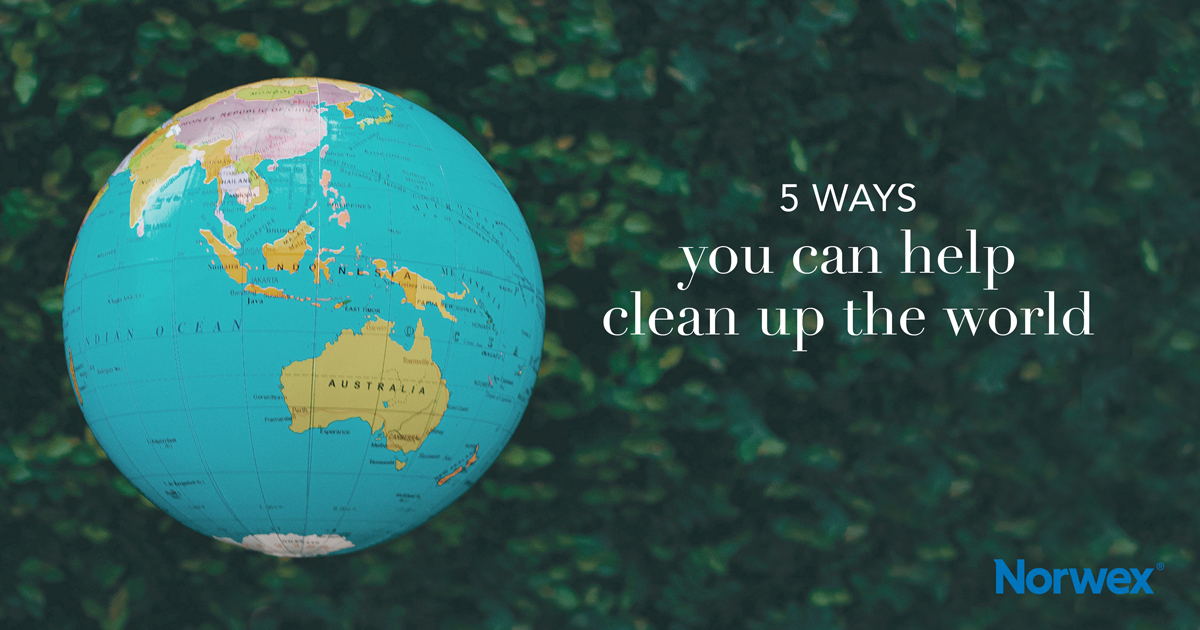

Imagine a global green wave, with over 180 countries, thousands of partners and millions of people joining forces on the very same day. This Saturday, it becomes a reality. Now in its fourth year, World Cleanup Day was created to tackle the global trash problem by removing litter and mismanaged waste from our beaches, rivers, forests and streets.
A bit of history: The event’s humble beginnings date back to 2008. In just five hours, 50,000 people in the small European nation of Estonia banded together to clean up the entire country. Word spread quickly, inspiring other nations to adopt the same ambitious “one country, one day” formula.
Fast forward 10 years. The simple act of cleaning evolved into the first official World Cleanup Day in 2018, a collaborative global movement mobilizing all spheres of society—governments, organizations, corporations and environmentally minded individuals.
Norwex’s Norwegian roots align perfectly. Known for its forests, fjords and fresh air, Norway ranks among the world’s most environmentally friendly countries. For 27 years, Norwex® has prioritized sustainability, creating quality products that keep our homes, families and planet safer.
With millions of people around the world set to roll up their sleeves this Saturday, here are ways you can make a difference—not only on World Cleanup Day, but every day year round.
Two words of caution: Carry hand sanitizer to cut down on the germ factor. And be sure to exercise caution by picking up trash safely.
Here’s another eye-opening fact: According to the Environmental Protection Agency (EPA), paper and cardboard waste—of which paper towels are a part—make up the largest percentage of waste materials in the U.S. And every day, more than 51,000 trees are cut down to feed the paper towel habit of North America.
The good news is disposables are easily replaced with sustainably minded alternatives. A quality microfiber cloth can replace paper towels and provide a superior, safer clean, without the use of chemicals. That goes for mop pads, too.
Other products that not only help save the planet but also help with your budget include cloth napkins, dryer balls and even microfiber makeup remover cloths and facial pads.
Simple, common-sense solutions include:
• Check toilets, faucets and pipes for leaks. Even a small drip can waste 50 gallons of water—or more.
• Only wash full loads—dishes and clothes.
• Use a low-flow shower head.
• Turn off the water while: shaving, brushing your teeth, even cleaning vegetables.
• Water your lawn thoughtfully, from time of day (early morning) to positioning sprinklers correctly.
For example, when you look into some of the programs that Norwex supports, you’ll find The Seabin Project. Through our office in Malta, Norwex placed 10 Seabins around that island country to address growing concerns about harmful chemicals, plastic pollution and environmental issues—and 10 more are coming soon.
And at the community level, we support the Washed Ashore Project, an initiative to express and teach environmental issues via the arts. Through this project, community members of all ages work together to clean up polluted beaches and convert debris into giant sculptures of the sea life that is most affected by excessive plastic pollution.
Resources:
Thank you, it was a pleasure to read and draw certain conclusions for myself.